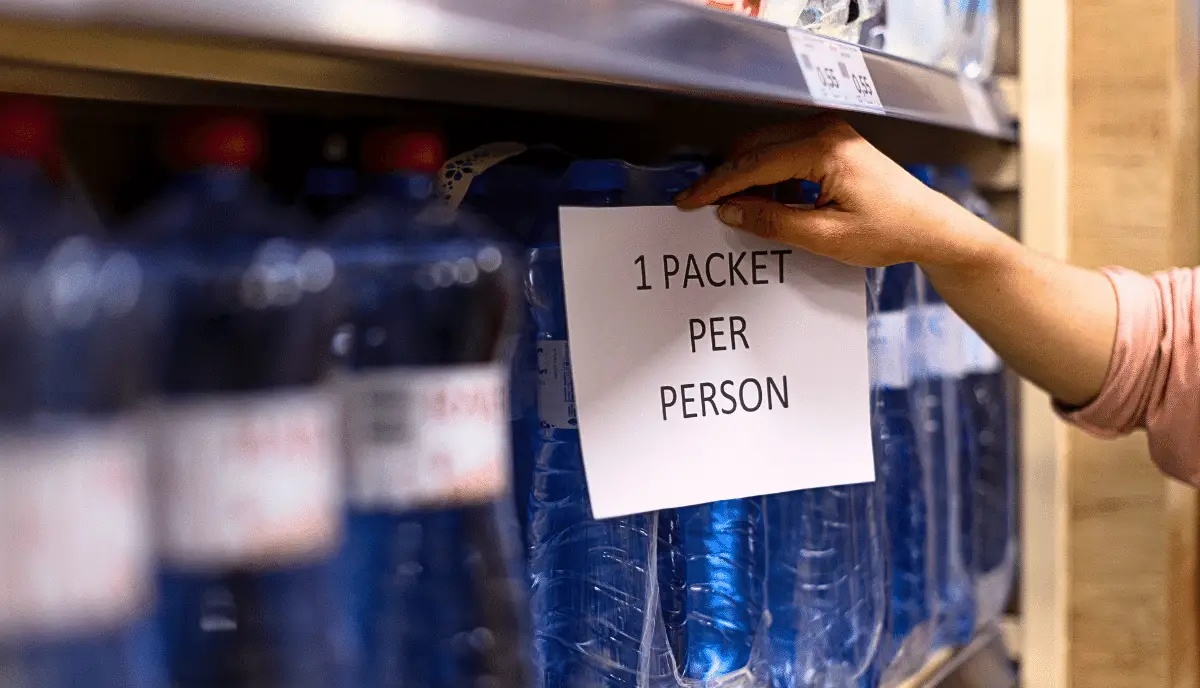Walking down a grocery store aisle, you might’ve come across signs that read “Limit 2 per customer” or “Due to high demand, only 3 items allowed per purchase”. Ever wondered why? Let’s dive into purchase limits and understand why your local grocery store might implement them.
What is a Purchase Limit?
Simply put, a purchase limit is a restriction set by the store on the number of specific items a shopper can buy at one time. This is implemented to make sure that products are fairly distributed amongst shoppers, especially during times when demand is high or supplies are low.
Purchase limits are often applied to essential items such as toilet paper, hand sanitizers, or even food products like rice and canned goods. By having these limits, grocery stores can prevent hoarding and allow more customers to access the needed goods.
Sometimes, purchase limits are set due to manufacturer or supplier shortages. This occurs when there is a lack of raw materials or logistical challenges that delay the delivery of products to the store.
On the other hand, purchase limits may also be imposed as a response to a sudden surge in demand. This can happen during natural disasters, public health crises, or when a panic-buying mentality occurs in the community. By implementing purchase limits, grocery stores can better manage their inventory levels while also ensuring that goods are available for as many customers as possible.
Why Do Grocery Stores Have Purchase Limits?
1. Inventory Management
Purchase limits are often implemented by grocery stores to maintain a steady inventory flow. By restricting the quantity of certain products that customers can buy, store owners can make sure that there is sufficient supply for a larger number of buyers. This helps to avoid stock shortages and enables a more uniform distribution of items.
2. Economic Considerations
Grocery stores may also impose purchase limits for economic reasons. When the cost of goods increases due to market fluctuations or supply chain issues, stores might limit purchases to prevent consumers from stockpiling items at lower prices. This practice helps maintain a store’s profitability and prevents sudden price surges for customers.
3. Social and Ethical Reasons
Purchase limits can also be driven by social and ethical considerations. During times of crisis or natural disasters, essential items such as water, food, and medical supplies are in high demand. By implementing purchase limits, grocery stores can ensure that these critical resources are available to as many people as possible, thereby promoting fairness and equal access.
4. Vendor Agreements and Manufacturer Limits
Another reason behind purchase limits is the restrictions sometimes imposed by vendors or manufacturers. These parties may enforce a limit on the amount of product that can be sold per customer to regulate supplies or protect their brand image. Grocery stores, in turn, comply with these guidelines to maintain their relationships with suppliers and uphold their role in the supply chain.
What are the Pros of Grocery Store Purchase Limits?
Grocery store purchase limits come into play for various essential reasons. These measures aren’t just arbitrary decisions but are rooted in the larger objective of creating an equitable shopping environment for everyone. Let’s dive into the benefits of these limits.
Pros:
- Prevention of Hoarding: Purchase limits deter customers from stockpiling out of panic or speculation, ensuring products remain available for a broader audience.
- Promotion of Responsible Consumption: With constraints on bulk buying, customers may better prioritize their needs and plan their shopping, leading to reduced waste and a more sustainable shopping habit.
- Improved Supply Chain Management: Limits help absorb sudden spikes in demand, ensuring a seamless flow of goods, benefiting not only the individual store but the whole supply chain, from manufacturers to distributors.
While it might sometimes seem restrictive, purchase limits in grocery stores have distinct advantages that look after the collective good, promoting fairness, sustainability, and efficiency.
What are the Cons of Grocery Store Purchase Limits?
While the intentions behind purchase limits are noble, it’s also essential to acknowledge the flip side. These restrictions, although beneficial in some contexts, can pose challenges to certain shoppers and situations. Let’s explore the downsides.
Cons:
- Inconvenience to Shoppers: Especially for larger households or those with unique dietary needs, limits can mean more frequent shopping trips or having to visit multiple stores.
- Impact on Low-Income Households: Those who rely on bulk buying to stretch their dollar further may find purchase limits financially burdensome.
- Customer Dissatisfaction: Not everyone understands or appreciates the rationale behind purchase limits. This could lead to frustration, a preference for other stores without such constraints, and in the long run, potential harm to the store’s reputation and customer loyalty.
While grocery store purchase limits serve a purpose and offer several benefits, they are not without challenges. Store owners and managers need to be discerning, weighing the pros against the cons, to decide on the best strategy for their customers and business.
Are Purchase Limits Only Going to Get More Popular?
The grocery world is ever-changing. With the rise of online shopping and the recent memory of global events causing rushes on products, we might see more limits in place. However, remember that these measures are designed with the best intentions – keeping goods accessible and affordable for all.
While purchase limits might seem inconvenient, they’re rooted in creating a balanced and fair shopping environment. Next time you see that sign, remember: it’s all part of keeping the grocery harmony!

